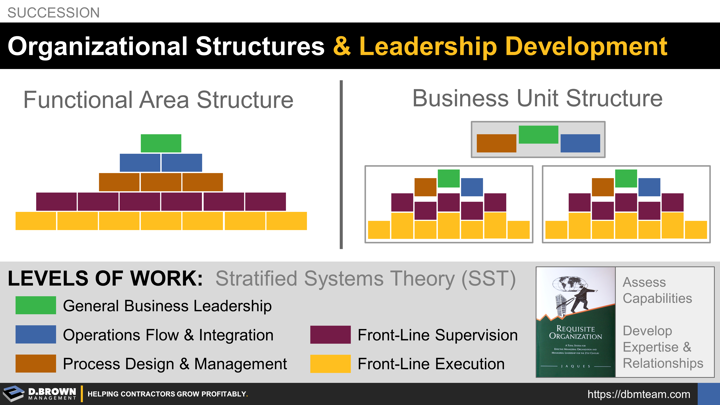In a functional area structure, you avoid duplication of roles and individual functional areas such as estimating, purchasing, and field management are centralized. If executed effectively, this creates great efficiencies with the enabling bureaucracy required for scalability.
For some contractors, it makes sense to break the business into smaller independent business units so broader general leadership skills can be developed and assessed. These individual business units are smaller and the job roles must be more fluid, which can be great for accelerating development and frustratingly messy at the same time.
Just remember that compensation and accountability will not create competencies and both structures require deliberate development of the team.
This is more challenging than we can cover in a short post. Please contact us if you want to further discuss the specifics of your organizational structure.

